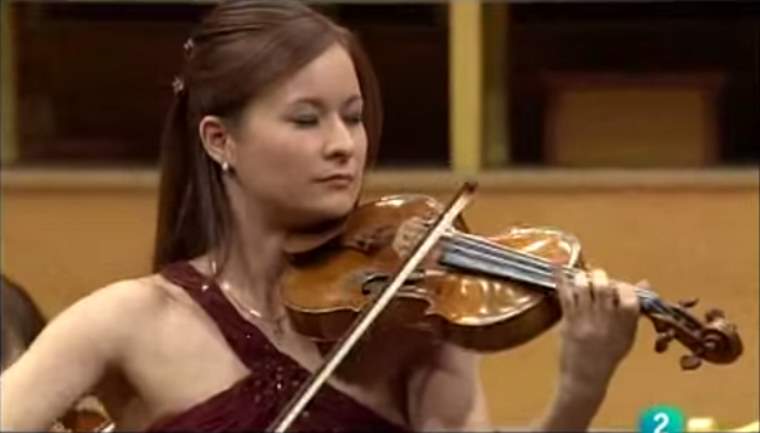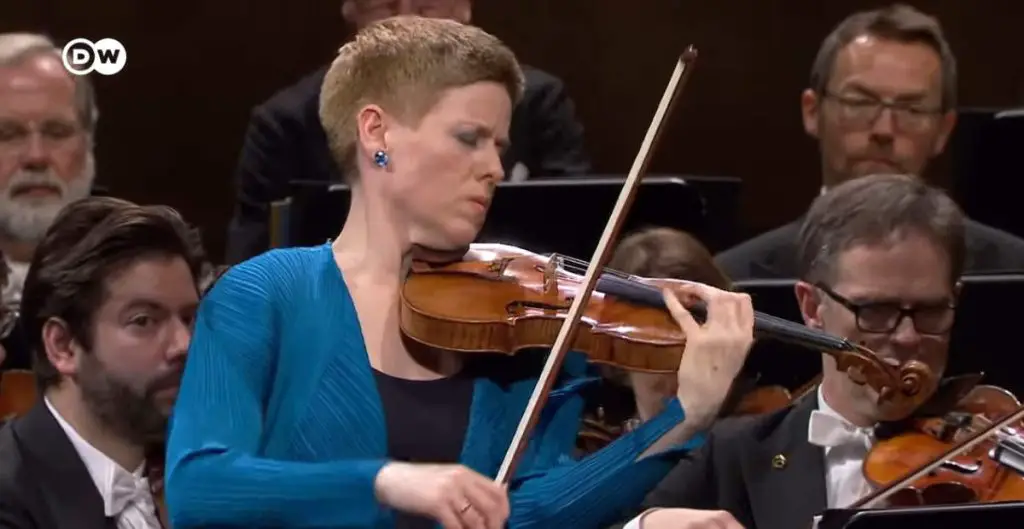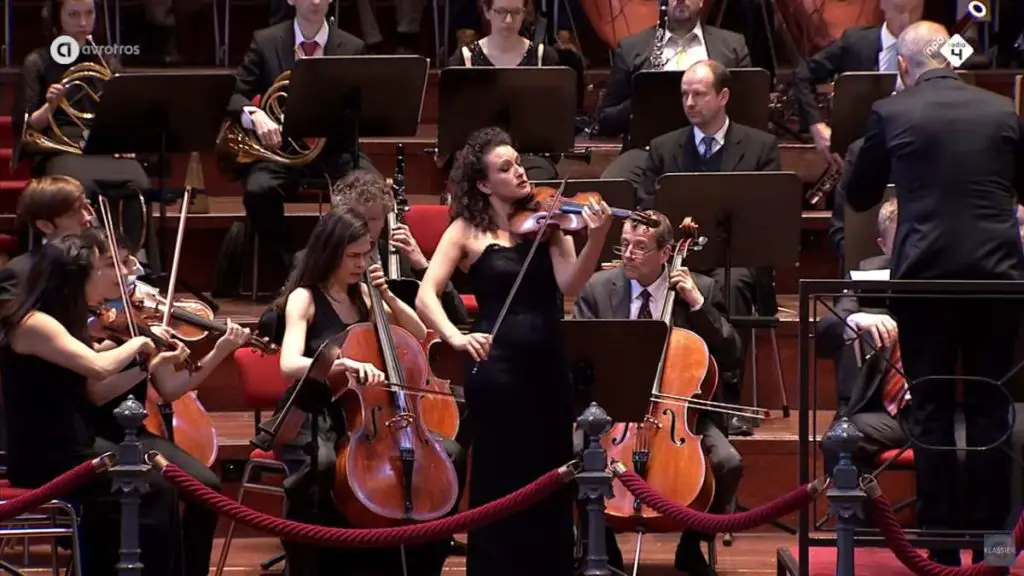Accompanied by the RTVE Symphony Orchestra (Orquesta Sinfónica de Radio Televisión Española), German classical violinist Arabella Steinbacher performs Ludwig van Beethoven’s Violin Concerto in D major, Op. 61. Conductor: Walter Weller. The video was recorded in Madrid on October 7, 2007.
Beethoven’s Violin Concerto
Beethoven wrote the concerto for his colleague Franz Clement, a leading violinist of the day, who had earlier given him helpful advice on his opera Fidelio. The work premiered on 23 December 1806 in the Theater an der Wien in Vienna, the occasion being a benefit concert for Clement. The first printed edition (1808) was also dedicated to Franz Clement.
The work is in three movements:
- Allegro ma non-troppo (D major). The first movement commences with the timpani playing four beats, followed by a theme played by the oboes, clarinets, and bassoons. The strings then join in with a non-diatonic D# that resolves into a V7 chord. The clarinets and bassoons present a different theme before it is abruptly interrupted by a boisterous section in B-flat major. The movement then progresses to a theme in D major and its parallel minor. Later on, the soloist makes an entrance playing octaves on a V7 chord.
- Larghetto (G major). The second movement is based on a lyrical musical theme of great musicality, which, according to some specialists is of Russian origin.
- Rondo. Allegro (D major). The finale of Beethoven’s Violin Concerto starts abruptly with the musical theme rendered by the solo violin. The passage from the second part is made without the usual break. An element of novelty in this part is that the composer does not write the cadence for the violin, but allows the violinist to improvise, thus showing his technical and interpretational qualities.
After its premiere on December 23rd, 1806, the work was, for the longest of time, not actually recognized for its beauties and neither as one of the most challenging works of this genre. It would take another “Wunderkind” of the 19th century, namely the composer Felix Mendelssohn, to re-introduce this work to the public during the mid-1800s, after which time it continued to remain in the concert repertoires in its rightful place which it, along with its never-diminishing popularity, still holds today.
The RTVE Symphony Orchestra (Orquesta Sinfónica de Radio Televisión Española), also known as the Spanish Radio and Television Symphony Orchestra is a Spanish radio orchestra servicing RTVE, the Spanish national broadcasting network. The Orchestra is based at the Teatro Monumental in Madrid, Spain.
Arabella Steinbacher

Arabella Miho Steinbacher (born in Munich on 14 November 1981) is a German classical violinist. She is the daughter of a German father and a Japanese mother. When she was three, her mother read that a German violin teacher had recently returned from Japan after studying the Suzuki method. Steinbacher started violin lessons at that time. When she was nine, she was enrolled at the Munich College of Music and mentored by Ana Chumachenco.
Steinbacher came into contact with Ivry Gitlis and participated in master classes by Dorothy DeLay and Kurt Sassmannshaus in Aspen, Colorado. She won several important prizes (the Joseph Joachim International Violin Competition in Hanover), and a grant from the Free State of Bavaria in 2001, then became a student of Anne-Sophie Mutter’s Freundeskreis (“Circle of friends”).
Steinbacher currently plays the Booth Stradivarius (1716) provided by the Nippon Music Foundation.
Sources
- Violin Concerto (Beethoven) on Wikipedia
- RTVE Symphony Orchestra on Wikipedia

